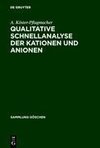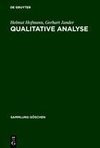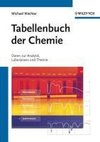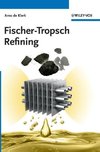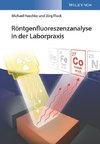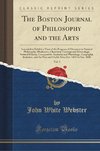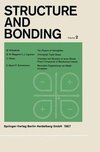
-
 Anglický jazyk
Anglický jazyk
Ultrafast Optics and Spectroscopy in Physical Chemistry
Autor: Atanu Bhattacharya
Ultrafast spectroscopy is an advanced spectroscopic technique which enables us to capture events (mostly microscopic) in a very rapid time scale (spanning from nanoseconds (10-9 sec) to attosecond (10-18 sec)). The introduction of this spectroscopic technique... Viac o knihe
Na objednávku
133.47 €
bežná cena: 148.30 €
O knihe
Ultrafast spectroscopy is an advanced spectroscopic technique which enables us to capture events (mostly microscopic) in a very rapid time scale (spanning from nanoseconds (10-9 sec) to attosecond (10-18 sec)). The introduction of this spectroscopic technique to chemistry came with microsecond resolution near about 1950 with the development of flash photolysis by Norrish and Porter (R G W Norrish and G Porter, Nature, 164, 658 (1949); Discuss. Faraday Soc. 17, 40 (1954). They studied chemical reaction dynamics in time domain, for the first time. Thereafter, with the advances made with ultrafast lasers, the time resolution improved continuously over the years, reaching the "picosecond" in 1980, the "femtosecond" in 1990 and the "attosecond" in 2000. The field is continuously maturing and has earned noble prize in chemistry twice: the first one was awarded to M Eigen, R G W Norrish and G Porter, and the second one was awarded to A Zewail. This highlights the significant role of ultrafast spectroscopy in chemical dynamics study (more broadly in Physical Chemistry).
Ultrafast Spectroscopy is a vast and exhaustive subject and perhaps everybody working in the field of ultrafast spectroscopy would agree that it is difficult to introduce this subject to a new student, particularly with physical chemistry (or chemistry) background (education obtained at the bachelor or master level in India). Generally, the language of ultrafast spectroscopy and related optics is not part of the chemistry education in India. Students with academic background in physics and electrical engineering are far better suited to this. However, physical chemists have to measure physical properties and monitor dynamics of different physical and chemical processes routinely using ultrafast spectroscopic techniques. Furthermore, physical chemists have to reason intellectually about a new ultrafast technique to monitor a novel dynamics of chemical system. This leads to a problem, particularly when it comes to educating (Indian) chemistry students in ultrafast spectroscopy laboratory. Unfortunately, no single textbook is available which is suitable for a chemistry student new to this field. Realizing this need, a course on ultrafast optics and spectroscopy was offered by me in the January session of 2014 to the integrated and regular PhD students at Indian Institute of Science and the favourable reception to the course by the students from several departments, including Physics, Centre of Nano Science and Engineering, and Physical Chemistry, confirmed the existence of that need, not only in physical chemistry but also in other related disciplines.
The primary goal of this text book is that any student (beginner), even one who has never heard of the subject, should be able to learn what ultrafast spectroscopy is, why optics related to the subject requires special attention, how to use the basic ideas of the subject in laboratory-based ultrafast spectroscopy experiments, and how to interpret the experimental observations, and so on. Furthermore, the book should be studied without any help from an expert in the field. The level of mathematics is suitably selected in the book so that any student with basic knowledge of algebra, differentiation and integration would comfortably go through the book. As chemists often tend to see the physical picture of a mathematical formula, significant discussion on the meaning of mathematical expressions used in the text is included.
- Vydavateľstvo: World Scientific
- Rok vydania: 2018
- Formát: Hardback
- Rozmer: 235 x 157 mm
- Jazyk: Anglický jazyk
- ISBN: 9789813223677


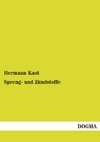
 Nemecký jazyk
Nemecký jazyk 